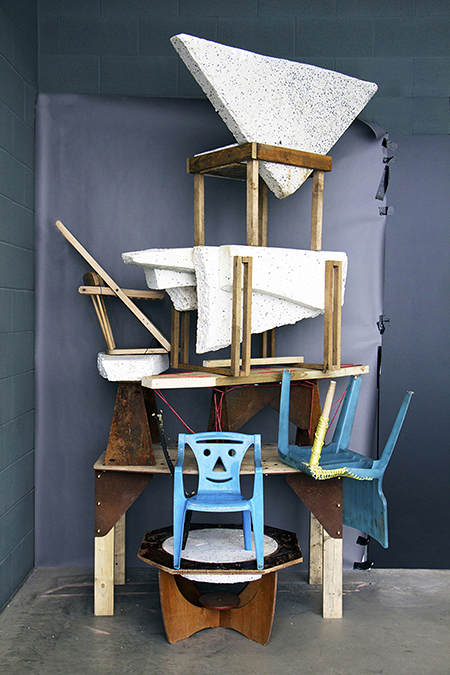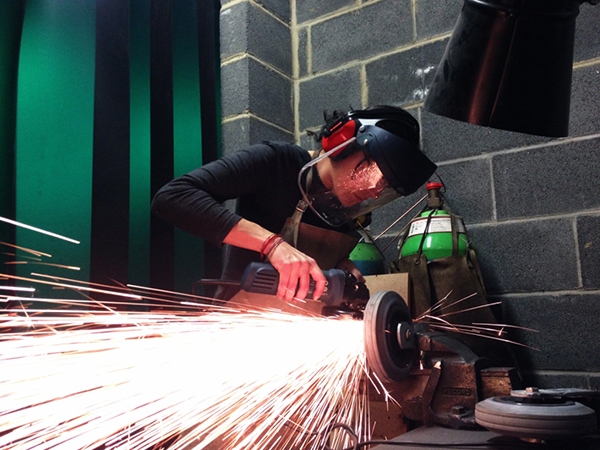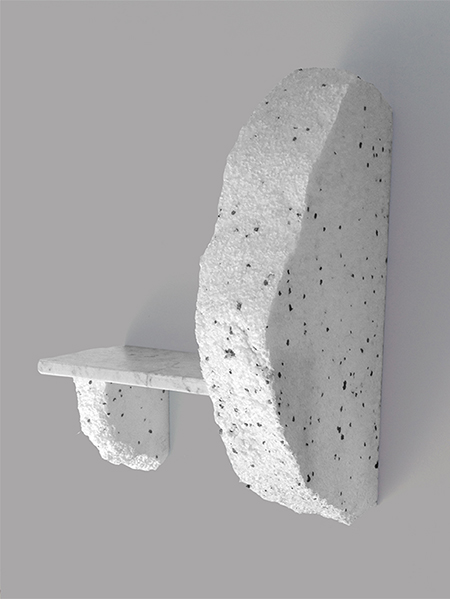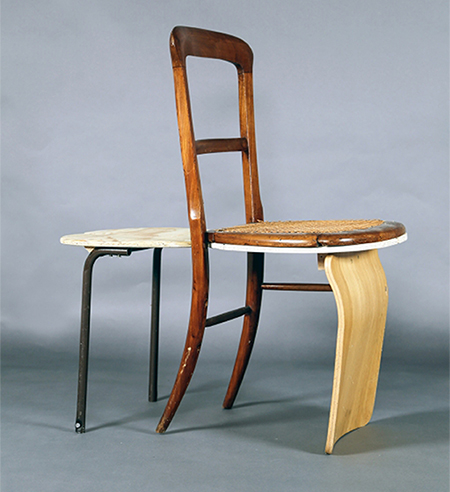Ilaria Bianchi is a furniture and product designer from Pisa, Italy. She studied Industrial Design in Turin, and after winning a scholarship moved to Stockholm where she did work experience in the studio of Fredrik Paulsen. Relishing Paulsen’s vibrant, crafty approach, she then went on to study MA Furniture, Ceramics and Jewellery Design at Central Saint Martins. Here, she shares her thoughts on our natural instinct for upcycling and her love of imperfect materials.
How did you first discover your artistic sensibility?
Since I was 5, my passion and obsession has always been art and creativity. I started my ‘artistic career’ very early, taking part in ceramic, painting and experimental workshops. I was a tireless and overexcited child always looking for new impulses and things to do. My mother, a committed feminist teacher, raised me, following pedagogy theories based on physical, emotional and intellectual education, always emphasising my critical and creative thinking and encouraging me to be autonomous in my choices. I chose an artistic high school where I took courses in sculpture, fine arts, graphic, architecture, design, glass working, wood working and where I never stopped striving to experiment with different techniques and materials.
What first attracted you to product design?
Objects and tools have always defined human beings. 2,000,000 years ago the first man on earth built the first tool – a stone chopping tool. Human beings built tools even before knowing precisely what for and they kept doing it. I think it’s a very interesting field, which is more related to politics, culture and the idea we have of progress, than some people realise.
What was the first thing you ever made from reclaimed materials?
Probably the first time I picked up shells and sticks from the beach and I made a mobile out of it. In my childhood, I used to use daisies as earrings, putting them in my ear holes, feeling like a princess. Everybody made these kind of gestures in a perfectly unconscious way. We have all had to find a solution to a problem in the quickest, easiest and most functional way – solving a situation using what is available at that moment. When we decide to design using this approach, we have to turn these actions into something rational.
Where can we find inspiration for this approach to design?
Kids and grannies. Kids, because their imagination has no boundaries, and things are not strictly tied to the image that we have of them – a fork is an aeroplane, arms are wing. Grannies, because they lived in a period of scarcity, and they had to redistribute the resources that were available at the time and make the most out of them. Now we are living in a time of abundance or even excess and we are keen to waste because we have the perception that everything is unlimited. It’s something instinctual that what we do, when we recycle or reuse things. Even if us human beings are progressively losing our primitive nature, trusting our instinct and retrieving our ancestral sense of judgment could be a valuable choice.
What inspired the Duo New collection?
It was a natural consequence of my first piece Duo, where I combined for the first time, polystyrene and marble waste. Polystyrene waste intrigued me at first glance – aesthetically akin to marble but merely a functional, poor material. It’s monumentality and roughness, it’s physical lightness but it’s aesthetic heaviness were identified as elements deserving of further reflection. The two materials together generated quite a controversial item. The beauty and value of marble is flaked with the material which usually packs it, while the latter, polystyrene, actually becomes a structural part of the object. It’s evolution, Duo Marble, is made using marble, limestone or granite that are available at the production stage, and this determines the colour and stone’s combination.
How would you describe your aesthetic?
The consequence of a morphology, dictated by an ethical commitment to the recovery of waste and minimising the drainage of resources.
What makes the creative process of reusing objects, different to other creative practices?
In the design world waste, when used, is often hidden or moulded into new appealing shapes, in order to conceal its origins. In CastAway Furniture, not only the shape and colour, but the whole design process is dictated by the materials I’ve recovered. The final object has to answer to the materials, and not vice versa. I chose to do this this because I think unspoilt beauty can be found in unused and abandoned materials. What I’m trying to do with these spontaneous shapes is showcase valuable resources and opportunities, where others see waste. By not hiding or changing the recovered materials, I feel the concept and the message herein come across very clearly: the object itself declares it. I’m not sure if I’m taking sustainable design to the next level, I just feel it’s a form of expression that works best for me, the way I think and perform. I would like to keep on seeing unexpressed potential in everything I work with, so that I can best exploit it.
What do you think constitutes good design?
I’m on the same page as Hella Jongerious in her manifesto #beyondthenew. I think every designer should have it printed and hung in his office. The incipit is, “We advocate an idealistic agenda in design, as we deplore the obsession with the New for the sake of the New, and regretfully see how the discipline lacks an intimate interweaving of values that once inspired designers as well as producers of their ideas.” She also affirms, “Aesthetic value is a potent means of communication. Ugliness is also a potent means of communication.” And I perfectly agree.
Images via Ilaria Bianchi











